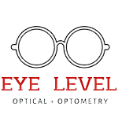
Understanding Your Glass Prescription
Understanding Glass Prescription
More often than not, after getting an eyeglass prescription – you might be curious to make sense of what the numbers and symbols really mean. While getting regular eyesight tests and frequent checkup is important, what is more important is understanding your existing glass prescription. The eyeglass prescriptions are written in a standardized formation for every eye specialist and optometrist to be able to read it. If you wear prescription glasses, you will see that the numbers are listed under OS and OD. These abbreviations translate into OS (oculus sinister) which refers to the left eye, and OD (oculus dextrus) which refers to the right eye.
At times, your eyeglass prescription might state OU, which refers to something involving both the right and left eye. As a general rule of thumb, you can understand your eyesight with relatively to the number zero. The further your eyesight is from zero, the worse your eyesight would be and therefore, would require more measures of correction. If your eyesight is near to zero, your prescription glasses would not be as strong as they would be if the case was reversed. Moreover, a plus sign in front of the number is there to showcase that you have farsightedness, while a minus sign is there to imply that you have nearsightedness. All of the numbers are measured in diopters, a unit used to measure creativeness or focusing power, it might be displayed as “D” on your eyeglass prescription.
The Numbers of Eyeglass Prescription
Eyeglass prescription come in varying numbers, and understanding them is only next in nature to understand your eyesight even better. There are multiple numbers in different categories, with each referring to something different, let’s take a look at each:
Sphere
You might have noticed the sphere column in the eyeglasses prescription you have, or the abbreviation – SPH. This part of the prescription refers to the lens power needed to fix the vision difference you are facing. Here it is also mentioned which case is which in terms of eye condition, be it nearsightedness or farsightedness. Similarly, the plus or minus sign are there to indicate the power of the lens required to fix the difference from zero. For example, on the SPH column of your prescription, it is written -7.00 D, which means there are seven diopters of nearsightedness. Similarly, the case would be for farsightedness if there is a positive sign preceding the figure.
Cylinder (CYL)
The next number you are likely to see is for cylinder, or CYL for short. It is used to show how much astigmatism a person has, if at all. Astigmatism is when the part of cornea has a slightly different curve and is a common vision problem. As an example, you can consider the shape of your eye to be that of a basketball, which has a standard curve despite being rotated in different directions. However, an eye having astigmatism is more like a football, having one side of the curve longer than the other. The cylinder number on your eyeglass prescription corrects the difference of the curvature.
Axis
The next thing you will notice about your prescription glasses is that of axis – a numeric representation of where the astigmatism is on the cornea. The representation is written in degrees starting from one, and going up to 180, concluding where exactly the astigmatism lines up. When you see x 180 mentioned on your prescription for your glasses, refer to it as axis 180, and know that it is representing the most positive meridian in the eye.
Add
One other thing you would have come across when looking at eyewear prescription notes would be for add – a facility where additional lens power is written. You might opt for one pair of eyewear that meets different needs. Here is where bifocals come in, in which the additional power of the lens is crafted into the glasses.
Prism
On the right side of your eyewear prescription, there may be a field of prism. This category reflects a special type of correction, which is built into the lens – particularly for those individuals with double vision. With the help of prism, the two visions of it are fused together so a singular image can be seen.
The Key Take Away for Glass Prescription
Be sure to understand the difference between prescription for eyeglasses and eye contact lenses. What numbers applies to one, might not apply to another – however, an initial diagnosis might have some crucial information for the other. It is important to make your way to an optometrist and get a proper consultation and fitting. A contact lens prescription has to satisfy the base curve, the lens diameter, alongside the specific manufacturer requirements. It is equally important to get frequent checkups done to understand how your behavior and lifestyle is impacting your eyesight. It is advised to keep your eyewear updated and get a thorough session with a specialist every 6 months.

